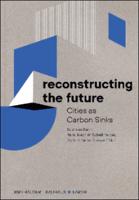Reconstructing the Future
Cities as Carbon Sinks
Contributor(s)
Earth, Bauhaus (editor)
Armillas Tiseyra, Rocío (editor)
Schellnhuber, Hans Joachim (editor)
Language
EnglishAbstract
The built environment is a critical factor in the climate equation. Approximately 40 percent of global emissions derive from the construction, operation, and demolition of human settlements. The 21st century must be the century of re-entanglement, where quintessential functions (housing, work, culture, recreation, etc.) are reintegrated within urban spaces; where socioeconomic and ecological systems form a mutually supportive network of networks; and where past, present, and future are perceived as interwoven waves in the river of time. Fortunately, opportunities exist to transform the built environment from a carbon source to a carbon sink through, e.g. timber construction high-rise buildings, circular bioeconomy methods, AI-assisted design, smart recycling technology, multifunctional land use, integrated regional resource management, and community-based urban development, to name just a few.
Keywords
Architecture; Sustainable Environment; Planning; Urban Design; Erde; Timber Construction; AI-Design; Mining; Recycling; Resource ManagementDOI
10.1515/9783035627015ISBN
9783035627015, 9783035626971, 9783035627015Publisher
De GruyterPublisher website
https://www.degruyter.com/Publication date and place
Berlin/Boston, 2023Imprint
BirkhäuserClassification
Architecture: professional practice
Climate change
Sustainability
Building construction and materials


 Download
Download Web Shop
Web Shop